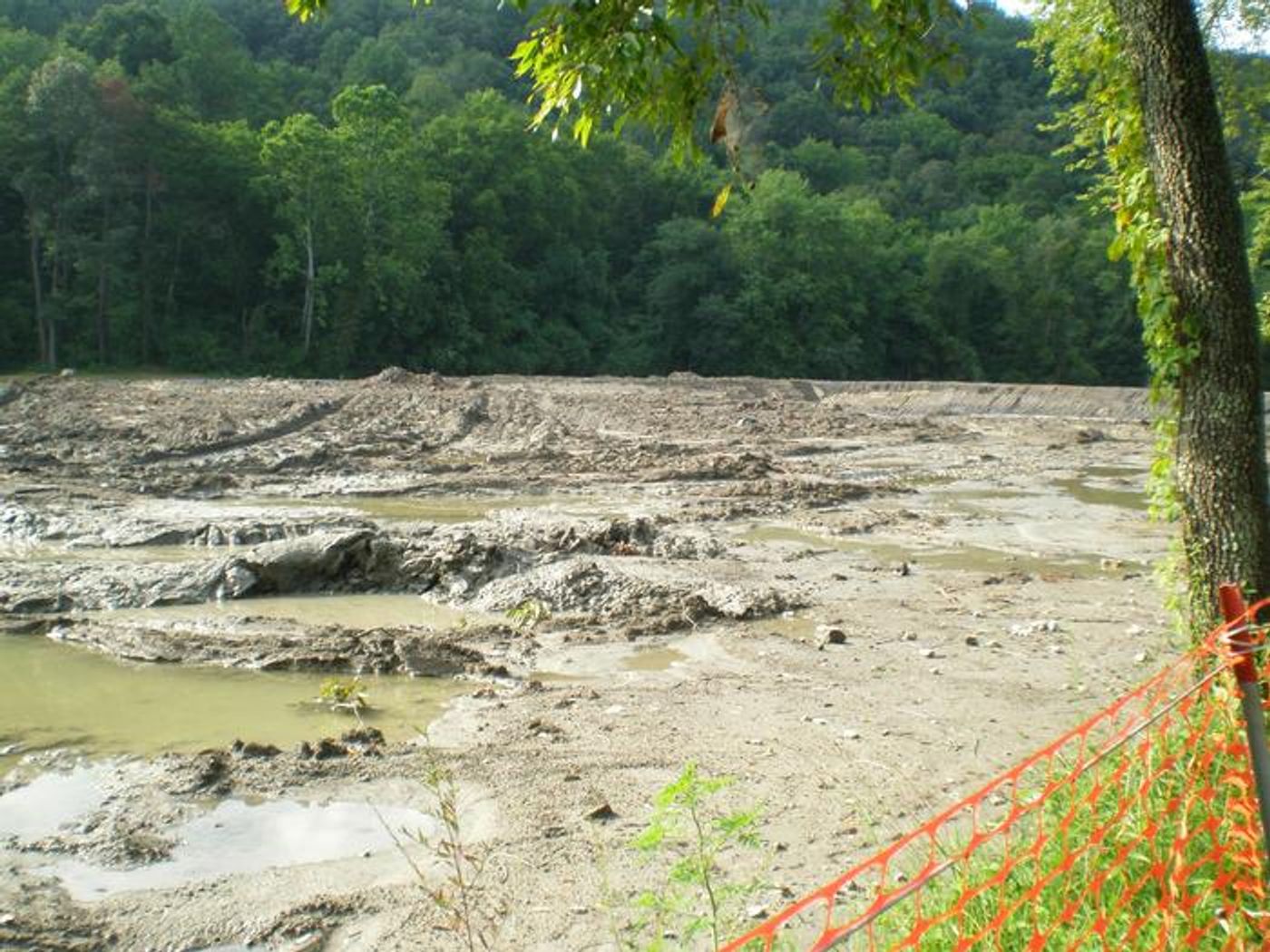Coal Ash Toxicity Begins at Nanoscale Levels
A recent study published in Environmental Science: Nano examines how the dangers from coal ash could emanate from its chemical makeup, which could help better understand the risks and dangers coal ash poses to both the environment and the public.
For the study, a team of researchers led by Duke University used the National Synchrotron Light Source II at Brookhaven National Laboratory to analyze the chemical makeup of coal ash. In the end, they found that the level of toxic elements that are byproducts of coal ash is mostly dependent on their structures at the nanoscale, specifically pertaining to arsenic and selenium.
Image of leftover sludge from the 2008 Kingston TVA power plant coal ash spill. (Credit: Helen Hsu-Kim, Duke University)
“These results show just how complex coal ash is as a material,” said Dr. Helen Hsu-Kim, who is a professor of civil and environmental engineering at Duke University, and a co-author on the study. “For example, we saw arsenic and selenium either attached to the surface of fine grain particles or encapsulated within them, which explains why these elements leach out of some coal ash sources more readily than others.”
This study builds off previous research conducted by Dr. Hsu-Kim on how oxygen plays a role in a toxin’s chemical makeup, demonstrating that not all coal ash is created equal and can produce different byproducts depending on the source of the coal ash. For example, coal ash heavy in arsenic might not result in high levels of arsenic absconding from it, and it’s also been found that coal ash responds differently depending on the environmental conditions, as well. Due to the complex variables at play, Dr. Hsu-Kim wanted to take a closer look, both figuratively and literally.
“Researchers in the field typically use x-ray microscopy with a resolution of one or two micrometers, which is about the same size as the fly ash particles themselves,” said Dr. Hsu-Kim. “So, if a single particle is a single pixel, you’re not seeing how the elements are distributed across it.”
Using the National Synchrotron Light Source II, which can produce light beams 10 million times brighter than the Sun to unveil a material’s atomic and chemical structure across the electromagnetic spectrum, the researchers were able to observe coal ash like never before. For example, they discovered that coal ash is comprised of particles whose shapes and sizes vary greatly.
“It was almost like we saw something different in every sample we looked at,” said Dr. Hsu-Kim. “The wide array of differences really highlights why the main characteristic that we care about — how much of these elements leach out of the ash — varies so much between different samples.”
While these results are promising, Dr. Hsu-Kim is still guessing how coal ash develops its unique chemical structure, either from nature itself or the power plants that burn coal. Regardless, this recent study demonstrates that a close look at coal ash, figuratively and literally, could help researchers better understand how it affects both the environment and public health.
One such incident involving coal ash was the Dan River Coal Ash Spill, which occurred in February 2014 and resulted in 27 million gallons of ash pond water and 39,000 tons of ash being released into the environment. in the end, Duke Energy was held legally responsible for the incident and was ordered to pay $3 million to clean up the Dan River.
What new discoveries will researchers make about coal ash and its impacts on the environment and public health in the coming years and decades? Only time will tell, and this is why we science!
Sources: Environmental Science: Nano, Brookhaven National Laboratory, Duke Pratt School of Engineering, U.S. Department of the Interior, United States Environmental Protection Agency
As always, keep doing science & keep looking up!









